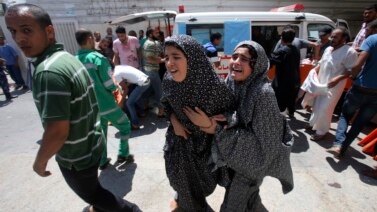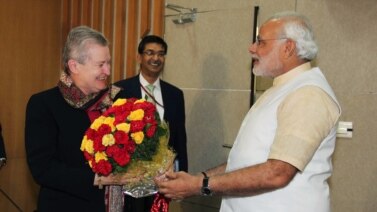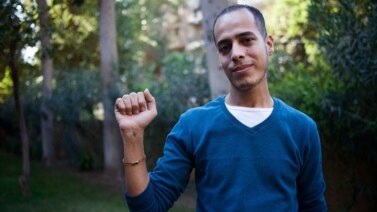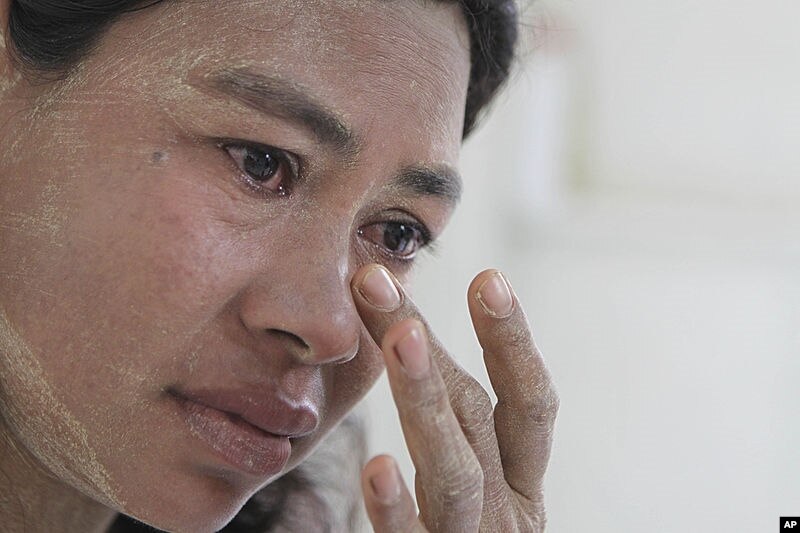
Hello and welcome to As It Ss from VOA Learning English.
I’m Christopher Cruise in Washington.
Today on the program, we report the latest news in the difficult fight against a deadly disease.
First the bad news: The United Nations says there has been little progress in reducing the number of AIDS cases in Asia…
“We have not seen a decline in new infections in our region in the last five years.”
But there is good news as well: A new study shows that reducing poverty can help protect teenage girls in South Africa from HIV/AIDS.
“Throughout sub-Saharan Africa, teenage girls face a huge risk -- which is poverty. And many of them really struggle to pay for basic things in their families, like food…”
Good news and bad in the fight against HIV/AIDS. That is the subject of our program today, as you learn everyday American English on VOA.
Number of HIV/AIDS Cases Rises in Asia and Pacific
A new United Nations report says little progress has been made in the fight against HIV in Asia. AIDS researchers and activists are answering the report by calling for area governments to give more help in the fight against HIV/AIDS.
Caty Weaver reports.
The report -- by the UN Program on HIV/AIDS -- says 4.9 million people are living with HIV in the Asia and Pacific area, which is mainly India, China and Indonesia.

Officials released the report late last month at the same time as the meeting of the International Congress on AIDS in Asia and the Pacific. The report has some good news. The rate of new infections in the area has been reduced by more than 25 percent since 2001. India, Burma, Nepal, Papua New Guinea and Thailand all report that new HIV infections dropped by more than 50 percent during the past ten years.
But the report also says that the number of new HIV infections is increasing sharply in Indonesia, Pakistan and the Philippines.
There are about 350,000 new HIV infections in the Asia-Pacific area every year. That number has been almost unchanged since 2008.
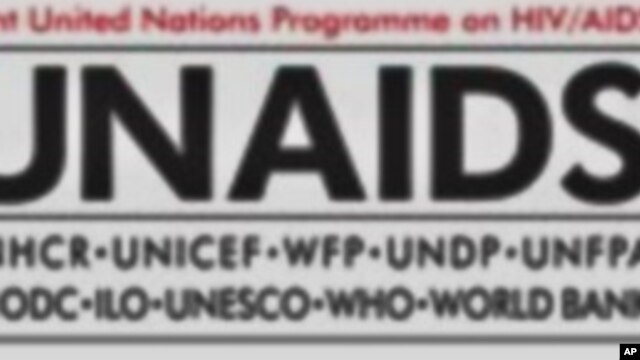
Steve Kraus is the director of UNAIDS in Asia and the Pacific. He says efforts to reduce HIV infections are failing.
“We have to innovate. We have not seen a decline in new infections in our region in the last five years. We need to challenge the status quo because laws, policies and practices too often are barriers. Access to treatment is not available and prevention programs have not been scaled up.”
The UN report says HIV infection is growing fastest among homosexual men, with 27 million men at risk to the virus. In Indonesia, Pakistan and the Philippines rising rates of new infections are linked to those who inject illegal drugs.
Malu Marin works for the non-governmental organization Seven Sisters.
“We have made gains in changing risky behaviors that increase vulnerabilities to HIV infection, but we have not made gains in changing the behavior of policymakers, political leaders and state actors. Evidence should be our foundation, and yet 30 years later HIV is still viewed from the lens of dogmatic morality. We are getting to zero change because of zero access to funding, zero legal reforms and zero political will.”
Ratu Epeli Nailatikau is the president of Fiji. He says more needs to be done to reduce discrimination.
“Programs addressing HIV related stigma and discrimination in the work place, schools and trade based organizations were also reported as contributing to progress towards this target in several countries, though such programs are rarely implemented at a large enough scale.”
I’m Caty Weaver.
Now, back to Christopher Cruise…
Thanks Caty...
Study: Poverty, HIV/AIDS and South African Girls
A new study shows that reducing poverty can help protect teenage girls in South Africa from HIV/AIDS. It says small, monthly government payments let girls live more normal lives, and avoid having sex with older men. These older men are called “sugar daddies.” They have money, and they use it to persuade poor girls to have sex with them.
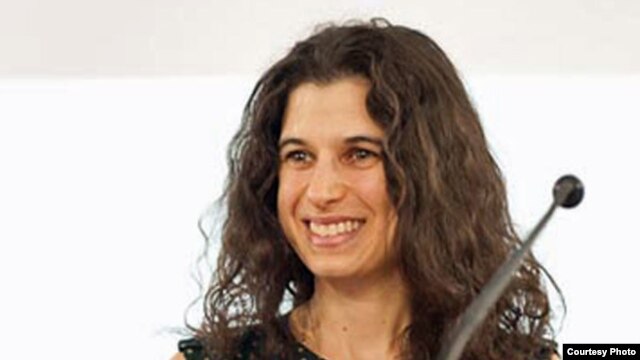
Dr. Lucie Cluver is an associate professor at Oxford University and the University of Cape Town. She is the lead author of the study.
“Throughout sub-Saharan Africa teenage girls face a huge risk, which is poverty. And many of them really struggle to pay for basic things in their families, like food. So, about 25 percent of the children in our sample don’t have enough to eat in their families for at least two days in the past week.”
But Professor Cluver says going hungry is just one of the problems they face.
“One of the biggest reasons that girls talk about having older boyfriends -- or having transactional sex or sugar daddies -- is because they need to pay school fees and they need to provide food for their family. And that is especially bad when someone is ill in their family. So if they’re living with a grandmother who’s old and very frail or if they’re living with someone who’s very sick with HIV/AIDS or something else, then it’s even harder because they have to support that person.”
She says boys do not face the same problem.
“Really it’s about the market. It’s a buyers and a sellers market. What you do get is older men who have access to cash, who are looking for younger girlfriends. You just don’t seem to see the sugar mommy syndrome, where you would have an older woman and a younger boy. You just don’t seem to see it.”
Professor Cluver says some people mistakenly believe the teenage girls want to have sugar daddies.
“A lot of what people have talked about when they talk about transactional sex and sugar daddies has been seeing teenage girls as choosing to have these older boyfriends because they give them nice toiletries and hair stuff and cellphones and luxuries. So they’ve seen it as something that these girls have been choosing to do because they’re aspirational -- because they’re trying to, you know, look like Beyoncé.”
Professor Cluver and her researchers spoke to more than 3,500 South African girls. Their average age is 14.
She says the South African government has increased payments that were given under an old program. The program now gives support payments of about $35 a month to 11 million children under age 18.
The South African government also gives about $96 a month for each child being cared for by people who are not their parents. There are 600,000 of these children. But Professor Cluver says many children still do not get payments from the program.
The payment system is not perfect. Professor Cluver’s study shows the payments do not reduce other kinds of risks for girls, such as the likelihood of having unprotected sex or having sex after drinking too much alcohol. And the system does not reduce the HIV risk for boys.
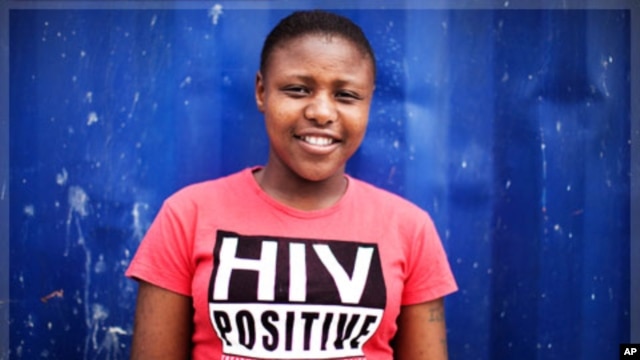
Studies have shown that payments can also help lower the number of new HIV cases in Malawi and Tanzania. In Malawi, the payments permit girls to date boys their own age. These boys are less likely to be infected with the AIDS virus than older men.
And that’s our program for today.
I’m Christopher Cruise.
Steve Ember will be here tomorrow with another edition of As It Is. I hope you’ll join him then, here on The Voice of America.
